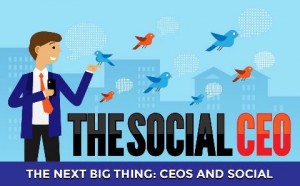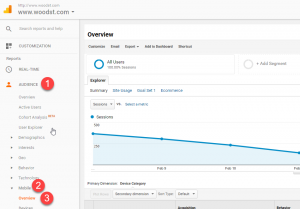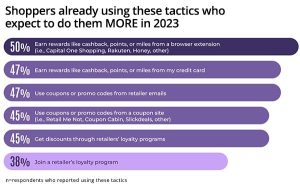Turing Distinguished Leader Series: After-Show Episode One

Thank you for the phenomenal response to Turing Distinguished Leader Series. Looking at the success of our sessions, we’ve come up with an exciting after-show format. In the after-show, we will discuss the main takeaways from our most recent TDLS episode.
Jonathan Siddharth
Welcome, everybody. So this is our after-show to our podcast on scaling unicorns in a remote-first world. I have with me Kat Hu from our Chief of Staff team. I’m Jonathan Siddharth, CEO, and founder of Turing, and we’re going to reflect on today’s conversation with Sandesh Patnam from Premji Invest on scaling unicorns in a remote-first world.
Kat, what stood out to you in the chat with Sandesh today?
Kat Hu
Yeah, I’m excited to get started! But, first, Sandesh was so insightful and gave a lot of wisdom for scaling startups from his vantage point with about a decade of experience in venture capital. One thing that stood out was how he emphasized that culture is essential for leadership as startups get scaled.
And then Jonathan, turning it back to you. I know culture is also very important at Turing. How have you thought about the culture at Turing, especially with it being a remote-first company?
Jonathan Siddharth
Yeah. Sandesh’s point on culture resonated with me. And the first thing I thought about was the need to write things down in terms of your culture or what you’d like your culture to be. For a high-growth company like Turing, there’s so much culture we import relative to the size of the company. I feel like if you don’t write down the kind of company you want to build, sometimes things get set by accident. So then I think a lot about when it comes to cultures.
Step one is thinking through the culture, core values, and how you want people in the company to work, make decisions, and write them down. Step two, the harder part, is to communicate and ensure that the culture you want is the culture being lived in the company.
For example, at Turing, we have a culture of moving fast, working only on big needle-moving things, not incremental things, and being very data-driven in our decision-making. So I think a lot about how we reinforce that in our hiring, firing, and promoting. Do we live those values? Or is it just a doc that lives somewhere the CEO wrote a long time back that people just read, and that’s it?
I’m curious about how you see the second piece of the puzzle? Do you think we live those values at Turing today? What do you see as things that we could do better?
Kat Hu
So I do think that culture does come from leadership, and something that I’ve seen that works well at Turing; hopefully, this advice can help other companies as well, is that you host the CEO roundtables. And this is, for many of the team’s leadership, where we transparently talk about this culture.
And I think another thing that is strange here is you’ve asked everyone to bring in the best of somewhere else that they’ve worked and see how we can make it Turing. So not only are we living out our core culture, but we’re also very open-minded to find the best culture and continuously improve and grow with the team’s diversity worldwide.
Jonathan Siddharth
Yep, that’s right, Kat. I was speaking with our head of recruiting this week. And I’d shared with her that a passing grade is when somebody fits the culture we want. We have a four-point scale of strong reject, weak reject, weak accept, and strong accept. So three out of four is like you fit our culture, but we want more than that. Ideally, we want somebody who’s bringing something amazing to our culture that we can imbibe and become even stronger. That’s when you go above three.
And I think reinforcing those values in hiring is also important to ensure that your team has the values you care about. Value alignment is particularly critical for leaders because when you hire a leader, you will have many clones of this person. Whatever strengths or weaknesses they have, it’s going to be magnified and massively leveraged and amplified.
So I am much more careful about cultural fit, being more strict about holding the line on culture fit, and not hiring people who don’t fit our culture.
Kat Hu
So that relates to something else that stood out to me in our talks with Sandesh. He mentioned that at each level of scale, oftentimes, as a founder, you need to up-level or transition the leadership group. When I heard it, I thought it was a bit of a taboo or a sensitive, emotionally fraught topic. What do you think about this?
Jonathan Siddharth
Yeah, and it’s definitely a taboo topic, and Sandesh alluded to it too. CEOs tend to be loyal to the team that brought them here. And that’s a bias to be aware of.
For this particular topic, we are primarily talking about the exec team, i.e., a CEO’s directs in a company. And typically, I hear from many people that an exec’s success rate is pretty low. For example, people tell me that 50 percent of the time, you should assume an exec doesn’t work out in the first six months. I’ve heard this from multiple people and multiple VCs in the past. And it’s always an unsettling and uncomfortable stat to hear.
And the way I think about this change is there are a few mental models you can have.
One mental model I have is to do what creates business value, to ensure that the company’s value grows with the steepest possible slope. So do what’s best for the business. A high-level director ensures the company’s value increases over time. And to do that, one question to ask yourself at some time is: “If you were hiring for this role today, would you still hire this person?” That’s one way to think about it and to check whether this would work or not.
The second is that with every exec, I think about their strengths and areas for improvement and everybody has areas for improvement. Are they aware of their weakness? Are they receptive to feedback? Are they coachable?
Are they either working on it by changing the way they work or are they open to fixing it with the right kind of hiring to complement their blind spots or weaknesses, maybe? When that is not true, when the person is unaware of the gap that exists and cannot change that, I would think about either layering that person or changing the responsibilities. It’s rare that you would have to fire that person because they’ve clearly been good enough to get the company to this particular stage. Hopefully, there is a way to find another role for them that could still be value-generating for the company.
Although realistically, I imagine in most of these cases, the person would probably choose to leave if that happened. In those cases, too, the CEO needs to be grateful for all this person’s contributions to help the company get to the stage. If I were doing this with someone, I would ensure that this person has a great next job opportunity lined up, and I will do everything I could to set them up there because it is the case that some people are probably better suited. Someone could be a superstar at the zero to 50 million revenue stage, but maybe the 50 to 500 million stage is not their sweet spot because it is a different job.
Your responsibilities change. Sandesh referred to people, processes, and repeatability. And this is a different type of job. You can’t be as hands-on as you were in the zero to 50 stage, and some people may not enjoy it as much. Maybe they like the zero-to-one phase more than the one-to-two. And it’s not that they are doing anything wrong. It’s just that their strengths are at that stage. And perhaps their strength is primarily in that stage one. And then a company would love to have them at that stage one phase. So by making a solid referral, we are finding the right fit where they are happy, and it’s also good for the company. So it’s a tricky conversation to have.
Kat Hu
I think it’s great to have a framework because it’s a topic that seems so hard to touch because of the emotional aspects. And I think, as you mentioned in the interview, you’re not only doing what’s best for the company but also helping the overall shareholders. You’re supporting the whole ecosystem and ensuring they’re set up for the best thing for them, which may not be the next level of scale.
Jonathan Siddharth
That’s right, Kat! And one of the things I think about when I have conversations with leaders in a high-growth startup, people should assume that their roles will evolve and change over time. Of course, when the company is growing, you expect your scope and responsibilities to grow too if you’re doing well. But I think it’s essential for the leaders to set expectations that roles will evolve, reporting structures will change, and will constantly be in a state of continuous improvement of the org itself, perhaps twice a year or once a year.
This is because, for a company that’s growing as fast as we are, something that worked a year back may not necessarily be the right structure now. So I think it’s essential to set that expectation early, so people are not surprised. It’s healthy when a company is continuously editing itself in the best possible structure for that next growth stage and the next business phase.
Kat Hu
And then, Jonathan, as the CEO and founder of Turing, I have a few questions about being a founder. The first is when Turing is growing and scaling rapidly as it has been in the last couple of years. How do you approach your personal change? And you mentioned the shift in roles and responsibilities and even mindsets, and so, how do you grow? How do you learn this with each stage?
Jonathan Siddharth
So I kind of work backward from where I would like the company to go in terms of scale growth, etc. And then, I work backward from all the risks to plan to get there and identify all the gaps. And then I map it to address those gaps. [I also think about] what are some areas where I need to uplevel myself, and then I seek out specific mentors. And, I read a lot, as you know.
I think about working on those specific areas of scale to make sure that I’m scaling at least a couple of years ahead of the phase for the company. It gets a little more challenging as you grow and scale. I think a lot of people can give and offer great advice to go from zero to 1 million, which is an important milestone or one to 10 million.
As you grow and reach a particular scale, it feels a little bit like doing a Ph.D. in a field where, after a while, you’ve gone pretty deep down the rabbit hole in one specific area.
For many PhDs, they might be the only people in the world who are exposed to that problem. So I tried to decouple a few areas, for example, leadership, management, scaling teams, culture, and many aspects of a CEO’s role.
How do you create a plan for the company? How do you ensure excellent execution? How do you recruit great execs, and how do you retain great execs? How do you work well with a board? How do you work with your investors in the right way?
So I seek out excellent mentors for each of them, and it’s almost like I have a Yoda for each specific skill, and occasionally I make my pilgrimage to Dagobah, this island where Luke meets Yoda. So I go there, and I try to learn from people who have done this at scale, and I try to absorb as much as I can and make the changes needed to apply that to Turing’s situation.
But it’s all about the mindset of being in a state of continuous learning and continuous growth. So it has its positives and negatives where I feel like on the negative side, it may feel like you’re constantly being self-critical. So you have to balance that with reminding yourself of all the good things that are also happening with the company.
But firstly, it’s about identifying areas you need to work on for this year, function-specific mentors, books, and other resources, and being in a state of continuous learning. Whenever I meet someone, I think about what I can learn from this person. So make sure you surround yourself with people you can learn from.
Kat Hu
Yeah, and I’ve seen that. But, again, I think being open-minded and surrounding myself with really good people, so I don’t make bad decisions within the company.
Jonathan Siddharth
For example, Kat, the superpower I want to steal from you is the excellence in structured communication and structured thinking. I feel like with you, when I have a meeting, there is very little that falls through the cracks, right? There is almost perfect information capture from a meeting, so that’s one of the many things I like about working with you.
Kat Hu
I appreciate it. And then the other question I had for you as a founder is the same question posed to Sandesh. What are the most important skills or traits to develop for future founders?
Jonathan Siddharth
I think Sandesh mentioned resilience, right? I believe resilience is a great trait.
As a founder, you need a strong bias for action and speed and to be unstoppable in finding your way around obstacles. I think it requires a lot of persistence. In my first company, I learned the value of persistence. I don’t know if it’s a feature or a bug. Whatever it is, I have it. And I was fortunate to work with a great co-founder, which has been phenomenal, and it’s been great partnering with him on two companies.
My first company took about nine years to get to a good acquisition. I think persistence is essential. I think it’s important to be in a continuous learning, continuous improvement mindset, where you’re always looking for ways to keep getting better daily and week after week. You kind of have to balance confidence with caution. You need a lot of self-confidence in your ability to execute and build a great company. But you also kind of have to be constantly scanning for your blind spots. My first company’s approach was primarily like: “Here’s what we need to build, and here’s how we’re going to build it. Let’s go build it.” It was a little more of what we needed to do.
Now, I think not just about what we need to do to execute and win the market and build an iconic company, but I also think about all the things that can go wrong. I think about all the ways we can fail and make sure we have a clear risk mitigation and contingency plan so that I’m never surprised.
So, I think a lot about redundancy and fail-safes for different plans. And it may seem pretty negative to think about all of that, but it actually gives me a lot of peace of mind when I know that: “Hey, here’s our plan A, but you know if something changes here, we have this plan B, and there’s a backup to this plan B which is Plan C.”
So there is no single point of failure for anything; it reflects in many other things. I always want to be in a situation I can walk away from if things are not good. And that means building sound backup systems in planning. So in terms of what’s a trait, maybe the trait is systems-level thinking, thinking in terms of contingency planning, and surrounding yourself with great people.
I think I am fortunate to work with a great exec team and a great co-founder. So maybe the trait there is being the kind of person that strong leaders want to work for. So those would be on my list, and it does take a lot of energy and work. It’s not easy. And it’s imperative to have an excellent personal support system. My wife, Emily, is amazing. I don’t think it’s very easy to be married to a founder CEO. And I think for everyone, it’s good to have a good personal support system outside of work. So that’s something that has helped me focus clearly on Turing and help the company get to where it needs to go.
I think it’s Paul Graham of Y Combinator, he has this phrase to describe founders, and he came up with “relentlessly resourceful.” So that was his phrasing of what it takes. But we all have blind spots, and I may be missing some stuff here too. This is from my experience so far. I’m sure if you ask me the same question a year or two from now, I will have a few more things that I want to add to this.
Kat Hu
That makes sense! Was there anything else from Sandesh’s interview that stuck out to you that you want to emphasize before we wrap up?
Jonathan Siddharth
There was one thing that I thought was interesting. I asked Sandesh: “What is different in a post-unicorn scaling stage that you want people to be mindful of?” He said: “In most markets, the first 20 percent is easy to get; the next 80 percent is tough. Although there won’t be a clear line that you cross where you’re like, ‘Oh, we have to do something different now.’ You have to continuously track what will help us unlock this next more challenging market segment. In the next 80 percent, is there something different in this customer segment? Are the objections different? Does the product need to change? Does the sales process need to change? Does the GTM need to change?
Recognizing that you may need to make some changes and again, what got you here may not be what brings you to that next stage and making sure that you make the right changes to attack that. So having this nuance to growth, it’s not for margins. It’s probably stage-wise.
That made me think about being aware of it, being open to it when it happens, and keeping an eye on it. Sandesh said you must first hear and sense it in the GTM function. So I’m going to keep my eyes and ears peeled to make sure that we see that and react to it optimally.
Kat Hu
Yeah, that’s excellent advice!
Jonathan Siddharth
Yeah. Great. This was fun. This was our first after-show for these how-to-scale unicorns in a remote-first world. Do you think we should keep doing this?
Kat Hu
I enjoyed this, and I loved learning more about your perspective, diving deeper into suggestions, words, and wisdom, and making it more actionable.
Jonathan Siddharth
That sounds great! And for all founders, heads of engineering, and others listening, if you’d like to spin up your Engineering Dream Team in the cloud, hire pre-vetted engineers at the touch of a button, go to Turing.com, and that message was not sponsored, it was organic! Cool. Thank you, Kat, and we’ll continue this with our next segment.
Kat Hu
Thanks, Jonathan. Have a good one.
Jonathan Siddharth
Thanks. Bye.
The post Turing Distinguished Leader Series: After-Show Episode One appeared first on ReadWrite.
(21)




